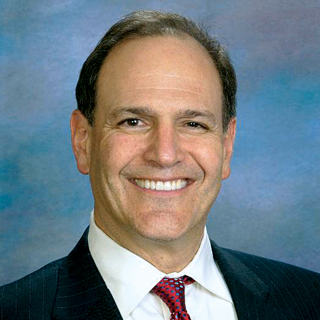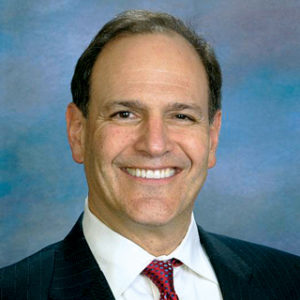

In 1986, the Supreme Court held that workplace harassment constitutes sex discrimination and is unlawful under the Civil Rights Act of 1964. In 1991, the Supreme Court nomination hearings for Clarence Thomas transfixed the public’s attention, when Anita Hill accused Thomas of sexual harassment at the Equal Employment Opportunity Commission, prompting many women to come forward with their own stories.
Many companies by 1997 had developed mandatory training programs for all employees, focusing on unlawful behavior and how to file a complaint, as they recognized the extent of potential legal and public-relations exposures. In 1998, the Supreme Court held that companies could protect themselves from hostile-workplace harassment lawsuits by providing training and complaint procedures.
But the #MeToo movement has raised attention that sexual harassment is still a major issue. Today, some 40% of women and 16% of men say they have been sexually harassed at work, which matches the same rates since the 1980s. It appears that efforts to change sexual harassment at work have not been fully successful.
The skilled nursing industry hasn’t been immune to this ongoing struggle. In 2018, the Equal Opportunity Commission brought a lawsuit against a nursing home it claimed ignored sexual harassment complaints for two years and fired whistleblowers. It lead to a $100,000 settlement.
An effective compliance and ethics program must ensure that responses to sexual harassment are both effective and up-to-date with current research and thought.
Is your training effective?
The value of sexual harassment training since the 1980s? Mixed results. Many male employees are likely to say increased focus on sexual harassment has made it harder for men to know how to interact with women in the workplace.
What if sexual harassment training is only moderately effective? What if training, which focuses on unlawful behavior, signals to men that they are the problem, and men then begin to blame women for the training and unfavorable messages being conveyed about them during sexual harassment trainings? Might this produce a feeling of defensiveness among men and perhaps lead to resistance and inappropriate responses?
During a Pew Research study focusing on sexual harassment in the workplace, more than 30% of men said that false claims of sexual harassment are a major problem, whereas 58% of women who had been harassed said that not being believed is a major problem.

If sexual harassment training has questionable results, then is the most common response to sexual harassment — more training — the answer? Perhaps not. What about men who are prone to harass? Does training help them? Uncertain. Research shows that men who are inclined to harass women before training become more accepting of harassing behavior after training. Nevertheless, companies usually require men who are culpable to do more training.
A growing approach to sexual harassment is called Bystander Intervention training, a program that trains participants to identify situations that could lead to sexual harassment and to intervene before, during, and after an incident in the workplace. The message is that coworkers have a role to play in ending harassment against women.
The Bystander Intervention approach
The EEOC has listed Bystander Intervention training among its best practices for preventing sexual harassment and discrimination in the workplace. Fostering a culture of transparency will allow employees to feel comfortable helping fellow coworkers who should be considered allies who are working together to solve problems of sexual harassment rather than potential perpetrators. (Bystander Intervention Training: Diversity Harassment Prevention (diversitybuilder.com))
It’s everyone’s job to stop sexual harassment, similar to the compliance and ethics program mantra “if you see something, say something.” Sexual jokes? Bystanders should interrupt the joke telling. Sexually assaultive stares? Call out this behavior. Training focuses on what to do when signs of a problem exist.
Anyone who witnesses or becomes aware of potential instances of sexual harassment should report it to a manager or designee, such as the compliance and ethics officer. Managers must report any harassment that they observe or know of, even if no one is objecting to the harassment. If a manager receives a report of harassment, or becomes aware of harassment, it must be promptly reported, without exception, even if the manager thinks the conduct is trivial, and even if the harassed individual asks that it not be reported. Managers may be subject to discipline for failing to report suspected sexual harassment or otherwise knowingly allowing sexual harassment to continue.
Management training
Another approach to preventing and stopping sexual harassment involves training managers. Manager training is effective because it makes clear that sexual harassment must be dealt with by all managers, not just the manager in whose department the harassment is occurring. This approach is similar to Bystander Intervention training. Instead of focusing on the male participant in the training as a potential wrongdoer, the emphasis is on the group of managers as a team to recognize early signs of sexual harassment and to intervene early when these signs of harassment are present.
Managers must ensure that no one engages in any retaliation for reporting. Managers should be trained to support an environment where employees are not disciplined, demoted, or terminated because they reported any incident of sexual misconduct in good faith or participated in an investigation of a sexual misconduct claim.
They should also understand that a negative employment action is not retaliatory merely because it occurs after the employee engages in protected activity. Employees continue to be subject to all job requirements and disciplinary rules after having engaged in such activity. In order to establish a claim of retaliation, an individual must be able to show that the adverse action was motivated by the protected activity of reporting suspected sexual harassment in good faith.
A compliance and ethics program provides a forum for discussion about effective approaches to sexual harassment and must ensure that employee training is meaningful and produces the response sought after—an improved and respectful work environment.
David Barmak, J.D., is CEO of Med-Net Compliance LLC in West Windsor, NJ. Betty Frandsen, MHA, RN, NHA, FACDONA, CO-Q, is president of Med-Net Academy, a member of Med-Net Concepts, LLC. She was previously director of clinical education for NADONA/LTC; and AANAC’s nurse leader curriculum development specialist.




